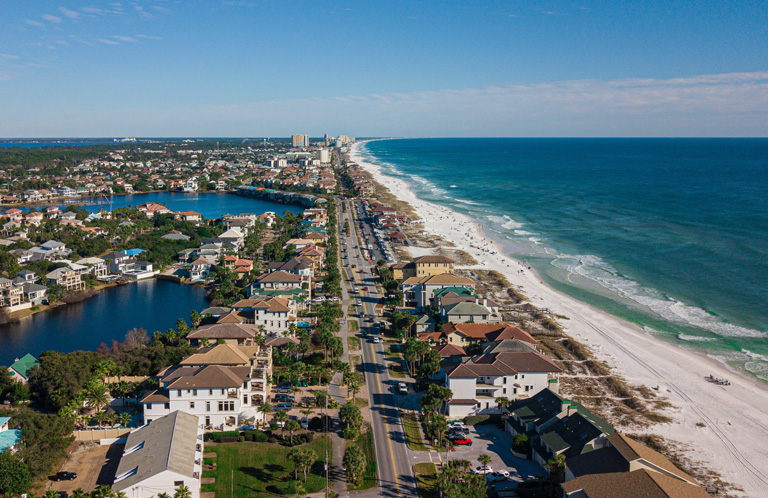Florida’s real estate market traditionally has been understood as a mixture of hospitality-oriented properties and second homes used for vacations and rentals.
There’s certainly truth to this, but the Sunshine State has increasingly become a primary place of residence for people and businesses. The state’s population increased by 211,000 people from July 2020 to July 2021 — second only to Texas — and the viability of remote work since the start of pandemic has influenced the housing market.
The impact that these demographic changes are having is reflected in declining home inventory in some parts of Florida, especially those have been hot markets. In South Florida, inventory fell to a record low of 7,906 units, according to data cited by CNBC.
As recently as 2017-2019, South Florida averaged about 27,000 housing units for sale at any given time.
Home supply shortages put pressure on would-be buyers in a number of ways when their options are limited. They either must spread themselves in to compete for the homes available, or remain in a rental market that has seen prices rise along inflation and increasing property values.
The role that institutional investors play in this dynamic can’t be understated.
In Brevard County in east central Florida, two Goldman Sachs-backed firms — Fundrise Interval Fund and Growth eREIT VII — last month scooped up 87 single-family properties for $45 million. They now own the entirety of the Cypress Bay rental community.
This is part of an aggressive push among investors to acquire properties in southern states where rents are rising.
“The degree of large Wall Street money coming in is fairly new,” Dr. Lawrence Yun, chief economist of the National Association of Realtors, told local station WESH2. “I think this is due to the unique circumstance of housing shortage. Wall Street is able to generate money, private equity, hedge funds and others to say let’s go chase the rising rents and putting money into rental property development.”
What happened in Cypress Bay is happening in Pensacola and other parts of the state, where more of this investor activity is expected to continue.
Florida’s luxury markets remain as hot as ever, despite the low inventory. Places like Palm Beach, Coral Gables, Fort Lauderdale and Miami Beach always drive tremendous value because they remain core destinations that help define Florida’s identity.
Florida’s top five luxury real estate markets delivered more than 45% of all sales volume for the region in the first quarter of this year — nearly $5.4 billion of $11.8 billion in total regional sales, according to Douglas Elliman’s Eliman report.
What figures to be a larger concern in Florida is how a growing population will fare with low home inventory outside luxury markets in the years ahead. It’s often pointed out that corporate investment in real estate like the community in Brevard County is a tiny fraction of total homes sold. That’s a fact. But when inventory drops to record lows, every bit more lost matters that much more to families seeking to purchase homes.
Photo credit Zachary Vessels/Pexels.com


